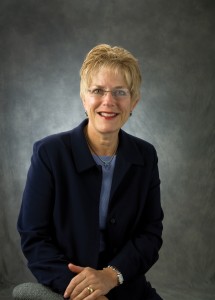
Fairfield County Business Journal spoke with Judy Resnick, executive director of the CBIA Education Foundation, about the state of Connecticut”™s education system.
How have the needs of Connecticut”™s business community shifted the focus of education in the state?
Resnick: “The focus now really has to shift to putting solutions together and solving the looming achievement gap. The real issue is that if we want to have a thriving economy and have our businesses stay in the state and continue to make things and do things and be productive, we need to be able to hire people who can meet their needs. We need young people who are going to come out of school with the ability to compete. In the Measures of Academic Progress scores, as a nation we have fallen abysmally to the middle of the pack.”
What is being done to combat that lack of readiness in those entering the workforce?
“We are working to shift the focus and place more significance in training the education system and working with our new commissioner, Stefan Pryor, who has come to the state with a great background. We are currently poised to make some hard decisions to create the competent workforce we need.”
Does there still seem to be an exodus of talented young professionals out of the state?
“There is some evidence that that trend has slowed because there are simply fewer choices out there. We are a tiny state and we are so richly endowed that not everyone will stay. I think for advantaged young people today coming out of college it can be very hard to stay in the state. There is not a lot of affordable housing focused at their level and it is hard to compete with the allure of big cities like Boston and New York. In addition job growth is pretty stagnant.”
Is the advent of baby boomers retiring and a population in general that is aging having its effect on how the state approaches education?
“In terms of the aging generation, there is good and bad news. It”™s a wonderful time to go into a lot of industries. Sectors like energy and manufacturing have average workforce ages of 50 plus; in those areas its staggering the amount of people ready to retire. For young people making their start it”™s a great time to create a career in these industries.
“The frightening part for the businesses is that they know they are going to need people and the pipeline of young people who are actually interested is not there. That”™s something we need to address and nurture. For a lot of these, and especially in the manufacturing sector, there is a perception that they are jobs you do not want to do. In fact, many of these positions are highly skilled jobs, well paying with opportunities for advancement.”
What is preventing underemployed growth industries from generating a parallel workforce?
“Right now our teachers and guidance system doesn”™t necessarily have the tools to identify where careers are and what businesses are in need of. There have been efforts to start externships during the summer, where teachers spend time in businesses, get context and hopefully bring some relevance to their students.
“An equal effort needs to be made with the parents to understand what the options are in our state or a particular area.
“We have perceptions to change. The manufacturing that remains in the state is very specialized and very high-value added; it”™s not grunt work. Most of the jobs we”™ve shed as a state are mass production high-volume, low-value positions. The ones still here are the specialized industries. That is in fact a vibrant part of the state and part of what is leading us out of the economy; they”™re hiring.”
Can manufacturing be appealing for those in our education system?
“We need to show that there is an emphasis around sustainability, how to do more with less in terms of environmental impact, waste and energy usage. In those areas there is a lot of excitement.
“That”™s where we will see jobs and new products. It”™s a delicate balance. Right now these kinds of technologies like fuel cells are very expensive. But as the advancement in the ability to store energy comes around, watch out. We are going to need to fill those jobs, or lose them.
“In the sustainable industry finding return on investment is an arena we need to invest. Energy management is a huge field that is arriving but right now you cannot get those skills in a school or find a degree with that focus.”
How can we change the structure of the education institutions to be more flexible to business needs?
“Part of our issue is we need to strengthen the ties between business and higher education institution. They need to be able to sit at a table and say, ”˜This is where we”™re going”™ and ”˜This is what these people need to know,”™ and then transfer that into a curriculum and then a degree.
“The faculty at these places have some great knowledge but they need to sharpen their pencils about what”™s of value to learn and how we learn it. Right now there is very much a cultural clash between higher education and the business world. We are a very high-value corporate state and if we want that to stay that way we need to do more than talk and have once-a-year advisory committees.”


















